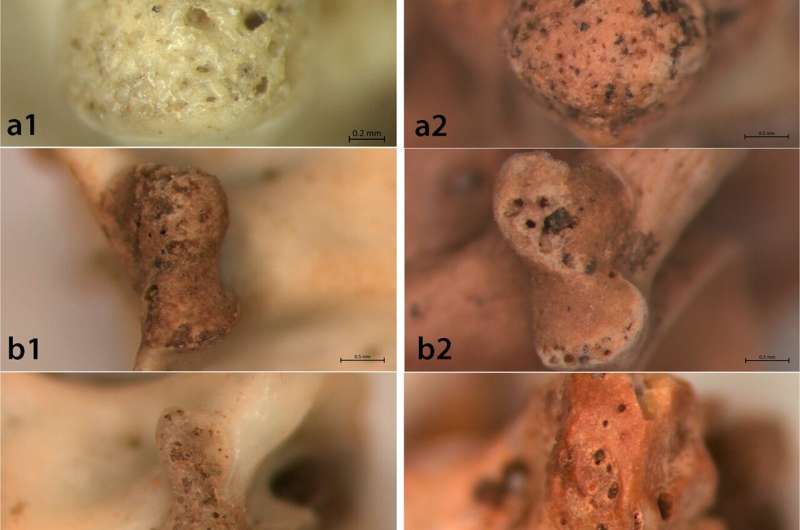June 30, 2020 report
Evidence found of Natufian people eating snakes and lizards 15,000 years ago

Bob Yirka
news contributor

A trio of researchers at the University of Haifa's Zinman Institute of Archaeology has found evidence of Natufian people eating snakes and lizards approximately 15,000 years ago. In their paper published in the journal Scientific Reports, Ma'ayan Lev, Mina Weinstein-Evron and Reuven Yeshurun describe their study of squamate bones found in caves at the el-Wad Terrace dig site in Israel and what they learned about them.
Squamates include certain kinds of reptiles, among them, snakes and lizards. In this new effort, the researchers were investigating a cave that had been inhabited by Natufian people approximately 15,000 years ago—they are believed to be some of the first people to build themselves homes and to cultivate plants—though they were still hunter-gatherers, they were on the cusp of becoming farmers. As the researchers sifted through material found in the cave, which included artifacts made by the Natufian people (knives and other tools), they noticed that a very high percentage of bones they found belonged to squamates—most specifically, whipsnake and glass lizards. The high numbers made them wonder if perhaps the people had been eating them.
Testing bones from large creatures such as deer or bear to see if they were eaten by humans is generally easy, as they often have knife or teeth marks on them. But testing tiny snake bones presented more of a challenge. To find out if the animals might have been eaten by humans, the researchers subjected modern snake and lizard bones to conditions that likely would have been encountered by the ancient squamates—butchering, then roasting and sandblasting them, for example, and feeding some samples to predators. The modern bones were then compared to the ancient bones for similarities.
The researchers found many similarities between the old and new bones—enough to convince them that the Natufian people did, indeed, eat snakes and lizards. They suggest their findings make logical sense. If the people that lived in the area built their homes, they needed to be able to survive by eating whatever was available locally—and there would have been a lot of snakes around, making them a likely target for a meal. They also noted that only non-poisonous snakes showed signs of consumption by people.
Written for you by our author , edited by —this article is the result of careful human work. We rely on readers like you to keep independent science journalism alive. If this reporting matters to you, please consider a (especially monthly). You'll get an ad-free account as a thank-you.
More information: Ma'ayan Lev et al. Squamate bone taphonomy: A new experimental framework and its application to the Natufian zooarchaeological record, Scientific Reports (2020).
Journal information: Scientific Reports
© 2020 Science X Network


















